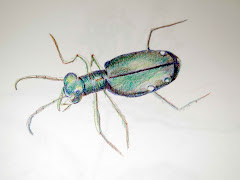Monday, April 23, 2012
Morea Lake State Park
I made a trip to Moreau Lake State Park this weekend, to see what changes spring has wrought in that lovely little corner of the world. Well, not so little, actually; I was reading an excellent article by Jack Freeman and Bob Goodwin, ADK (Adirondack Mountain Club) enthusiasts http://www.adk.org/ad_mag/moreau_park_hike.aspx and found out that Moreau Lake State Park (MLSP) is comprised of 4,200 acres! In 1998, the Open Space Institute purchased 3,200 acres of undeveloped land in Saratoga and Warren Counties, on either side of the Hudson River, from the Niagara Mohawk Corporation, and added it to the park’s previously existing 900 acres. The result is gorgeous, unspoiled, hiking trails that add breathtaking views, and have heightened the beauty and appeal of the park to many more nature enthusiasts.
Although the limits of the park are just south of majestic Adirondack Park (AP) in the Adirondack Mountains, which is made up of 6.1 million acres of publicly protected lands, the ADK publication committee was so impressed with the beautiful lands comprising MLSP, that they saw fit to include it in their new edition of the Adirondack Southern Region Trail Guide.
I found the lake and the environs quiet on Saturday, perhaps it was the forecast of heavy rains, but in the morning, though the skies were overcast, it was not enough to discourage exploring. While hiking around the lake, I was struck by the ubiquitous stands of Phragmites (Phragmites australis). The success of this plant is, in large part, due to the fact that it releases a chemical called Gallic acid, and when it is exposed to ultra-violet light, a second harmful toxin is produced: Mesoxalic acid. These two substances are destructive to other susceptible wetland plants, and as a result, it crowds out other, more beneficial, and productive, plants, such as cattails.
It spreads by horizontal runners, and can expand its ground by up to 16 feet per year. Its roots go very deep and strong, and as such it is very difficult to control. The most effective method found has been through controlled burning, but because of the depth and strength of these roots, the burns need to take place over two, to three, consecutive seasons, for one burn is not enough.
There were some other more hopeful signs of spring: apple blossoms on a wild apple tree, gill-over –the- ground, which was in abundance, and views of the lake, and the hills beyond, showed pale greens in evidence everywhere. I am sure these changes, and more, especially since the rain these past few days, will grow exponentially as we proceed into the season, and that is something to look forward to!
Subscribe to:
Post Comments (Atom)










oh jackie, we missed running into each other again this week !
ReplyDeleteAs far as the phragmites, not to worry, I am told the park has already started an eradication program. The full plan takes almost 5 years, after which native cattails will be planted.